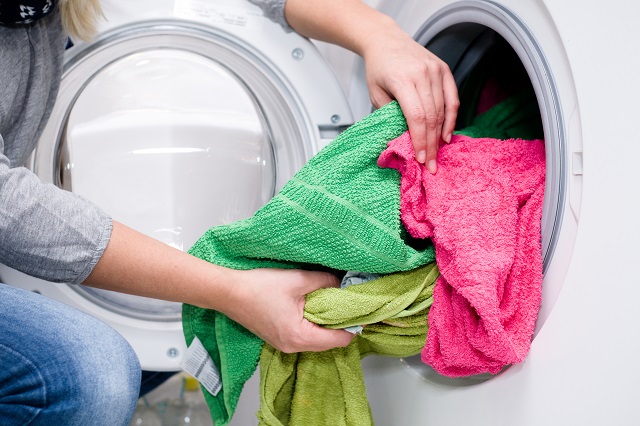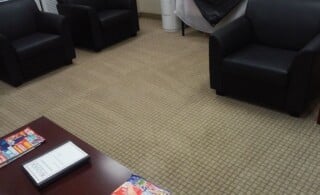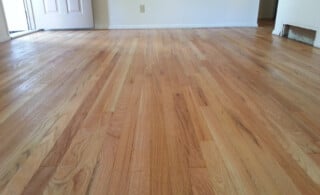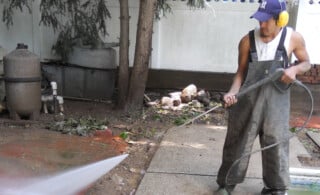
Even in the tidiest homes, there are at least a few places where you’d expect to find germs like kitchens, where food is stored and prepared, and bathrooms, where — well, you know. What you might not expect, however, is that there are plenty of germs hiding in places you think are clean.
What’s worse is that these sneaky microbes aren’t just icky. Ranging from staph, yeast, and mold to salmonella, E. coli, and fecal matter, they can also make you sick. Whether you plan to embark on the deep cleaning journey yourself or hire a local cleaning service to do the dirty work for you, here are five places you won’t want to miss.
Hard Floors
It’s no secret that carpets trap dirt, germs, and allergens that a regular vacuum can’t touch. That’s why you should consider hiring a professional carpet cleaning service to clean them every 12 to 18 months. However, you may not know that hard floors can also be a breeding ground for bacteria and other contaminants.
Not only that, when you drop something on a laminate, tile, or wood surface, the dirt and germs transfer faster than they do on carpet or rugs.
Forget the “five-second rule!” Here’s how to get your hard floors truly clean:
- Invest in a pair of house shoes. The soles of your shoes transfer substances from the outdoors to the inside of your home, including allergens, pesticides, and bacteria, up to 90 percent of the time. The best way to keep your carpet and hard floors clean is to remove your shoes at the door.
- Get a specialized cleaner. Traditional mops push dirty water around on your floors, leaving 30 to 60 percent of the nasty stuff behind. Instead, use a hard-floor cleaner that washes your floor with clean water. As a bonus, these units dry the floor as you go as well, which can prolong their life.
- Don’t forget the grout. The substance that holds your tile in place is porous, making it more susceptible to stains, mold, and some pretty gross microorganisms, especially in warm, moist places like bathrooms. To keep germs at bay, add grout to your spring cleaning checklist, and be sure the cleaning products you use aren’t too harsh. For an even more effective clean, hire a pro to steam clean your grout, then apply a sealant to protect the grout and extend the life of your tiles.
Light Switches
It makes sense when you think about it. Every time you walk into — and out of — a room, you touch your light switch. Coming in from outdoors, on your way to the restroom, after touching your face or your hair, and before you wash your hands. Light switches come into contact with (arguably) the dirtiest parts of our bodies over and over again, every day. But when is the last time you cleaned one?
Luckily, light switches, as well as electrical outlet covers, are fairly easy to clean yourself. Try following these steps:
- Always turn off the power, and double-check the outlet or switch before you begin. Like with any electrical project, safety should be your top priority.
- Remove the plate cover from the wall, and clean it separately. Soap and warm water works
- Spray a cotton swab lightly with cleaner, and use it to carefully wipe away dirt on the switch or power outlet itself.
- Dry each piece thoroughly, and screw the plate back in place.
- Turn the power back on.
- If the plate cover is discolored, they are inexpensive and easy to replace yourself. Just purchase a new one at your local hardware store. If you want to replace your outlet or switch, however, contact an electrician near you with the expertise to safely rewire them.
Electronics
If you want to eliminate dangerous germs from your house, you might want to start with the device you’re using to read this article. Electronics, like phones, tablets, keyboards, video game controllers, and remote controls, boast more bacteria than your toilet seat. So, step away from the screen, and follow these steps to get clean:
- Never take your devices to the bathroom. No matter how careful you are, fecal coliforms will end up on your phone or tablet.
- Wash your hands. This is always one of the first, best practices in addressing the spread of germs. If you don’t have access to soap and water, hand sanitizer will suffice.
- Clean your devices regularly and according to the manufacturer’s instructions. As a general rule, you should always power down the device and/or remove the batteries before A microfiber cloth, dry or slightly moistened with soapy water, will typically do the trick. Electronics wipes can also work. Just make sure your device and any covers or accessories are completely dry before you turn them back on.
Washing Machines
You’d think that the appliance you fill with soap every cycle would be one of the cleanest places in your home, but you’d be wrong. Our undergarments alone contain enough fecal matter to contaminate a load of laundry, and the germs will likely be transferred to the next one as well.
Even if you use hot water, it’s probably not in the 140- to 150-degree range required to kill most germs. That’s why it’s essential to clean your machine between loads and to take steps to protect yourself from germs as you do the laundry. Here’s how you can do that:
- Use bleach if you can. Bleach kills germs on clothes and inside your washing machine. You can use it on a load of whites, or you can occasionally run it through your washer without any clothes.
- Use a bleach alternative if you can’t. These solutions are safe for most clothes, and they contain peroxide that will help eliminate the germs in your machine and on your clothes.
- Let your clothes dry in the sun. The sun naturally kills the germs on your clothing, so hanging clothes to dry outdoors actually helps sanitize them.
- Wash your hands (again). If you use regular detergent, there are still germs on your clothes when you transfer them from the washer to the dryer. To prevent the transfer of bacteria to the next thing you touch, it’s important to wash your hands with antibacterial soap.
Furniture
Some of the most welcoming spaces in your home may be the dirtiest. Soft surfaces, like the sofa where you and your pet curl up to watch a movie or the ottoman where you rest your tired feet at the end of a long day, are another example of items that are used — but not cleaned — regularly.
Viruses like influenza can survive on upholstery for anywhere from a few hours to several months. An all-over, room-disinfecting spray won’t do the trick when it comes to cleaning and disinfecting your furniture, pillows, and curtains. Either hire an upholstery cleaner in your area, or try these tips from the experts instead:
- Vacuum first. Use a crevice tool to remove dirt, dust, and dander and to prevent particles from sinking deeper into your furniture. This practice can also do wonders for how your furniture looks.
- Clean the surface by hand. Washing covers can cause shrinkage or damage. Instead, leave pillows intact, and spray the upholstery with an upholstery-specific cleaner or a soap-and-water solution. Rub it in evenly, let it sit for a few minutes, and then wipe it with a clean cloth.
- Dry it completely. Set the cushions aside, and don’t use your furniture until it’s completely dry. Replacing the cushions or other parts while they are still moist will allow more germs to grow.
It’s no secret that some germs are good for your health, prepping your immune system and keeping you balanced. But the bacteria, viruses, fungi, and protozoa that cause serious illnesses should still be avoided whenever possible. By addressing the sneaky places in your home where germs like to hide, you’ll be providing an even safer, cleaner place for you and your family to rest, relax, and spend your time.
 Air Duct Cleaning
Air Duct Cleaning  Cleaning Your Exteriors With a Pressure Washer
Cleaning Your Exteriors With a Pressure Washer  Cleaning Wool Berber Carpet
Cleaning Wool Berber Carpet  Cleaning Hardwood Floors
Cleaning Hardwood Floors  Pressure & Power Washing Techniques for Deep Cleaning
Pressure & Power Washing Techniques for Deep Cleaning 

Are You Familiar With This Topic? Share Your Experience.